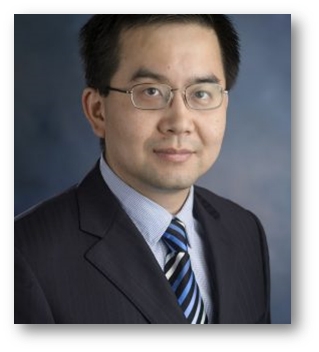报告题目:Optical Imaging of Nanoscale Chemical and Biological Processes
报告人:方宁 副教授
报告时间: 2018-05-31 14:30-17:00
报告地点: 生化科研楼一层会议室
主 持 人: 杜昱光 研究员
报告人简介:
方宁,副教授,现任职于乔治亚州立大学。2006年,博士毕业于加拿大哥伦比亚大学,2008年在爱荷华州立大学与艾姆斯实验室从事博士后工作。2008年荣获Journal of Analytical and Bioanalytical Chemistry最佳论文奖,2015年荣获分析化学和光谱学学会(FACSS)颁发的五维单粒子跟踪技术创新奖,分别在Nature Catalysis,Nature Communications等期刊中发表论文50余篇。主要研究方向:单分子和单纳米颗粒成像、生物分析化学、生物物理和微流控芯片。
报告摘要:
The research in the Fang Laboratory aims to open new frontiers in chemical and biological discovery through the development and use of novel optical imaging platforms, which provide sub-diffraction-limited spatial resolution, high angular resolution, excellent detectability, and/or nanometer localization precision for single molecules and nanoparticles.
• Rotational Tracking: The knowledge of rotational dynamics in and on live cells remains highly limited due to technical limitations. The differential interference contrast (DIC) microscopy-based Single Particle Orientation and Rotational Tracking (SPORT) techniques have been developed in the Fang Laboratory to acquire accurate measurements of anisotropic plasmonic gold nanorods in complex cellular environments. Rich information in five dimensions, including the x, y, z coordinates and the two orientation angles (azimuthal angle ϕ and polar angle θ , as defined in the figure) of the probe’s transition dipole, can be obtained from SPORT experiments. The SPORT technique is capable of extracting important information (including rotational rates, modes, and directions) on the characteristic rotational dynamics involved in cellular processes, such as adhesion, endocytosis, and transport of functionalized nanoparticles, as may be relevant to drug delivery and viral entry.
• Single Molecule Catalysis: The emergence of single molecule-based super-localization and super-resolution microscopy imaging techniques have dramatically improved our ability to reveal more detailed molecular dynamics and structural information and led to new discoveries in chemical and biological research that were previously unattainable with conventional diffraction-limited techniques. However, the current super-resolution chemical imaging techniques still lack several critical abilities, including insufficient axial resolution and the difficulty of imaging more complex three-dimensional (3D) nanomaterials. In seeking to circumvent these limitations, we are developing 3D super-resolution imaging for understanding molecular dynamics (including diffusion, adsorption, and chemical conversion, as well as their coupling) in nanopores at the single-molecule level under operando conditions. Highly tunable core-shell structures with well-defined geometry and manageable complexity have been designed and synthesized, and then visualized under our optical imaging system. Single molecule trajectories with nanometer resolution have been acquired to elucidate the effects of pore size, length, orientation, and surface ligands on molecular transport. New experimental insights on transport in nanoscale confinement acquired with the model core-shell porous structures can be generalized to guide the development of porous materials for heterogeneous catalysis and analytical separations.
附件下载: